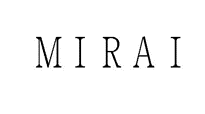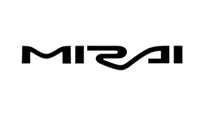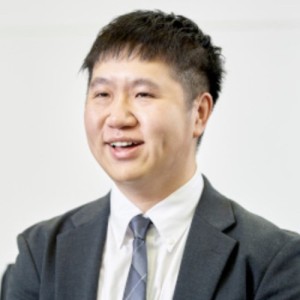Misappropriated Trademark Applications in Japan
31 May 2024

Trademark owners face potential risks in Japan when it comes to brokers who register marks unscrupulously. Aki Ryuka and Yichen Liu share some of the best preventative measures to combat misappropriated trademark applications.
Under Japanese trademark law, a “misappropriated application” does not necessarily lead to rejection or invalidation because trademarks are considered “selections” rather than “creations.” Therefore, even a “misappropriated” application is legal and registerable in principle.
On the contrary, Japanese patent law has strict regulations against misappropriated applications.
- A misappropriated application can be rejected (Article 49(vii)) or invalidated (Article 123(1)(vi)).
- Transfer of rights can also be requested (Article 74).
Hence, there are severe problems in Japan caused by trademark brokers. For example, the company Best License and its president, Ikuhiro Ueda, together filed 17,580 trademark applications in 2020, which was much more than famous Japanese companies like Sanrio (602 applications), Kao (541 applications), and Shiseido (530 applications).
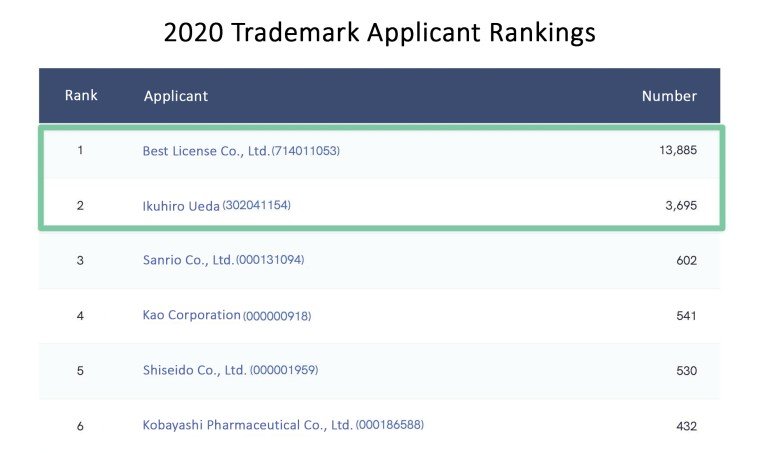
Source:https://jp-ip.com/ranking-list/index/1/4/2/2020
Although most of the Best License and Ueda applications are dismissed for the lack of filing fees, potential risks remain, as it is up to trademark brokers to maintain the application. Therefore, preventative measures against misappropriated applications (filed by trademark brokers) are essential.
Proactive measures
Establishing a trademark surveillance system
One of the most effective proactive measures is to establish a trademark surveillance system and gather the latest trademark information to:
・Challenge trademark applications or registrations, and
・Avoid trademark infringement.
However, trademark searches can be costly, which makes trademark surveillance with SDI (selective dissemination of information) tools an attractive alternative. By using SDI tools to establish trademark surveillance, users only need to create a search formula, register the formula in the SDI tool, and set an email address. SDI tool providers will conduct searches, update trademark publications, and periodically deliver the information to users automatically.
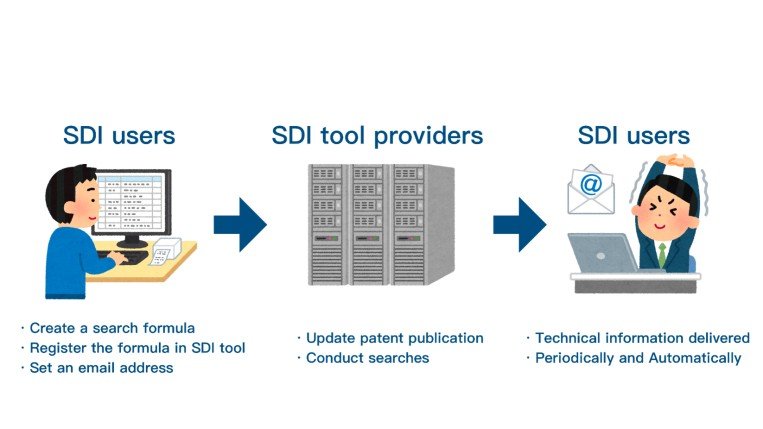
The SDI tool can be customized in a multitude of ways:
・Theme-based SDI
・Classification-based SDI
・Applicant-based SDI
・Legal status of specific applications/trademarks SDI
The SDI reports can be delivered periodically and automatically, on whatever schedule is preferred, whether weekly, monthly, or at some other interval. With one user ID, a user of SDI provider NGB can conduct trademark surveillance using 30 formulas for Japanese applications, 30 formulas for foreign applications, or 1,000 specific applications/trademarks. (https://www.ngb.co.jp/service/patent/service/research_technologies/)
Unfortunately, the Japan Patent Office does not provide free SDI. Only private SDI services are available in Japan.
Patent Offices Which Provide Free SDI Tools
|
|
Japan |
South Korea |
China |
U.S. |
EPO |
WIPO |
|
SDI with Formula |
✖️ |
◯ |
◯ |
◯ |
✖️ |
✖️ |
|
SID with Specific Cases |
✖️ |
✖️ |
✖️ |
◯ |
◯ |
✖️ |
Source: JPO (https://www.jpo.go.jp/resources/shingikai/sangyo-kouzou/shousai/jouhouhukyu-shoi/document/h28houkokusho/01.pdf)
Filing foreign trademark applications
Typical misappropriated applications in Japan
In many cases, an applicant has found themselves in a situation where they filed a trademark only in their own country because they only intended to sell their products there. When they later decided to export the products to Japan, they found that their trademark was already registered by their local import/distribution agent in Japan.
Such a trademark registration may face a trial for revocation (Article 53-2): “If ... the trademark application was filed without the approval of a person who has the right to the trademark without a just cause by their agent or representative ..., the person having the right to the trademark may request a revocation trial of the trademark registration.”
However, five years after the registration, such a trial cannot be requested (Article 53-3). Also, to avoid the impacts of Article 53-2, the local agent or representative may file the application under a third party’s name.
Suggestions
Even if you have no current plans to export products to Japan, we recommend filing your trademark in Japan, particularly when a third party may export the products. If a local agent does register the trademark in Japan, explain Article 53-2 and request them to transfer the right to you.
Keeping proof of prior use
Suppose the trademark has been used and become well known before a misappropriated application is filed. In that case, the true trademark owner can use the trademark even after the misappropriated application is registered.
We suggest keeping commercial records, advertisement records, and newspaper articles to prove the prior use and the status of well-known, especially if it could be considered to be a well-known trademark under Article 32(1): “Where a trademark ... has been used in Japan..., before the other person files a trademark application, and as a result, at the time the trademark application was filed..., the trademark has become well known as a person’s goods/services among consumers..., the person has the right to use the trademark....”
Registering copyright
In theory, registering a copyright first prevents the inappropriate use of a conflicting trademark.Article 29: “When the use of a registered trademark... conflicts with ... copyright... arising prior to the trademark filing date, the trademark registrant... may not use the registered trademark in the manner on the conflicting part of the designated goods or services.
However, Article 29 only prevents trademark use, rather than trademark registration, and most trademarks are not “creations” that are protected by the Copyright Law (Article 2(1)(i)).
After the damage has been done
‘Violating public order and morality’
Under Japanese trademark law, trademarks can be rejected and invalidated because of “violating public order and morality” under Article 4(1)(vii): “...no trademark may be registered if the trademark is likely to violate the public order and morality.”
Usually, violating public order and morality requires damage to the public interest. On June 26, 2008, Japan’s IP High Court ruled that “unless there are special circumstances, ‘violation of public order and morality’ is limited to cases where the issue is not between private parties.”
However, even between private parties, if the applicant has “a purpose of obtaining unfair profits or causing damages,” it can be found to be violating public order and morality. For example, in the case decided by Japan’s’ IP High Court on January 19, 2023, the applicant had filed more than 109 applications in two years that had no connection with each other, many of which it had sold or licensed on e-commerce sites.
In this case, the court found the applicant had filed trademark applications only to obtain unfair profits and, therefore, had violated public order and morality.
In another case before Japan’s IP High Court on August 3, 2015, the applicant was a franchisee who had filed a trademark application for the franchisor brand. When the franchisor learned this fact, the franchisee tried to use the application to negotiate for economic profits. The court also found this application violated public order and morality.
Achieving well-known status
If your trademark has achieved well-known status, you may rely on Article 4(1)(x) of the trademark law. Under Article 4(1)(x), “no trademark may be registered if the trademark is identical with, or similar to, another person’s trademark which is well known among consumers.”
How well-known constitutes well-known status in Japan? The trademark only needs to be known among a few neighboring prefectures and a certain field of people to become well known. On June 16, 1983, the Tokyo District Court said that a mark must be known “not only within one prefecture but also known over a considerable area in several neighboring prefectures.” On February 26, 1992, the Tokyo High Court further stated that “it is not necessary that the product be known all over the nation” and that “if the nature of the product limits the consumers to people in a certain field, it is sufficient that it is widely recognized among such consumers.” For example, the magazine Computerworld only needed to be well-known by people who were involved with the computer business to prove it was well-known.
Causing confusion
Under Article 4(1)(xv), “no trademark may be registered if the trademark ... is likely to cause confusion in connection with the goods or services pertaining to a business of another person.” It is important to note that even when the trademarks or designated goods and services are not similar, they may cause confusion.

Source: JPO https://www.jpo.go.jp/system/trademark/shutugan/tetuzuki/mitoroku.html
In a broad sense, “confusion” occurs not only when the products mislead people to believe that they are made by another company but also when the products mislead people to believe that they are made by a parent or subsidiary company, an affiliated company, or a group member company of another company. (July 11, 2000, Japan Supreme Court)
In a famous case, on November 21, 2022, the Japan IP High Court determined that “when used for its designated goods (cars, etc.), the product may be related to the business of TOYOTA or someone who has [an] economic or organizational relationship with TOYOTA, and may cause confusion about the source of the product.” (Mirai is the name of an electric vehicle made by Toyota.) As a result, the broker’s application was rejected because it may cause confusion between the broker and Toyota.
|
|
|
|
the trademark broker’s application |
TOYOTA’s trademark |
Achieving famous status
If your trademark is famous in any country, you may rely on Article 4(1)(xix). Under Article 4(1)(xix), “no trademark may be registered if the trademark is identical with, or similar to, a trademark which is famous among consumers in Japan or abroad ... if the trademark is used for unfair purposes.”
It should be noted that “famous” is a higher standard than “well known.” To be “famous,” the trademark needs to be known all over Japan or any foreign country among all customers to be protected by Article 4(1)(xix). In contrast, a trademark only needs to be known in several prefectures among a certain kind of customers to be protected by Article 4(1)(xv).
Also, Article 4(1)(xix) only works when the applicant files the application for unfair purposes. A number of IP High Court decisions have helped create the understanding of what is unfair in this context by ruling that each of the following was done for “unfair purposes.”
To prevent foreign companies from entering Japan. On June 20, 2005, the IP High Court ruled that “the plaintiff was aware that the cited trademark was widely known in the United States” and filed the application only to “prevent or make it difficult for the defendant to enter Japan, otherwise, to force the defendant to sign a domestic agency contract with the plaintiff when entering Japan.”
To use the trademark after cooperation. On March 30, 2010, the IP High Court ruled that “the plaintiff filed the application ... the same year its cooperation with the defendant had ended... The purpose of the application was to continue to enjoy the customer attraction power of the defendant’s trademark and products in order to make profits for the plaintiff’s own business.”
To free ride on another’s famousness. Microsoft announced its Office2000 product on June 16, 1998, and announced it in Japan on November 11, 1998. The plaintiff filed an application for “iOffice2000” on December 8, 1998. On November 20, 2001, the Tokyo High Court ruled that “the plaintiff filed the application only to free ride on the famousness of Microsoft’s trademark Office2000... There is a great possibility that the famousness of Microsoft’s Office2000 will be diluted”.
Other grounds with limitations
Not used trademarks. Under Article 50(1), “Where a registered trademark has not been used in Japan... for three consecutive years or longer..., any person may file a request for a trial for revocation.” However, this method only works when the trademark is not being used.
Trademarks containing well-known names. Under Article 4(1)(viii), no trademark may be registered if the trademark“contains the portrait of another person, or the name (limited to names widely recognized among consumers in the field of goods or services for which the trademark is used) of another person, or the corporate name, or well-known pseudonym, professional name or pen name of another person, or well-known abbreviation thereof (except those the registration of which has been approved by the person concerned).” However, this method only works when names or portraits are used in the trademark.
Misappropriated registrations. Under Article 46(1)(iv), “where a trademark registration falls under any of the following items, a request for a trial on the invalidation of the trademark registration may be filed where the trademark registration has been made on ... a person who has not succeeded the rights deriving from the application for trademark registration.” However, this method only works on a misappropriated registration rather than a misappropriated application.
For example, when A filed an application and therefore has “rights deriving from the application,” while B got the registration, A can file a request based on Article 46(1)(iv).
Providing information to the examiner before registration
If any of the above grounds apply to the misappropriated trademark application, it is important to provide such information to the examiner before the application gets registered.
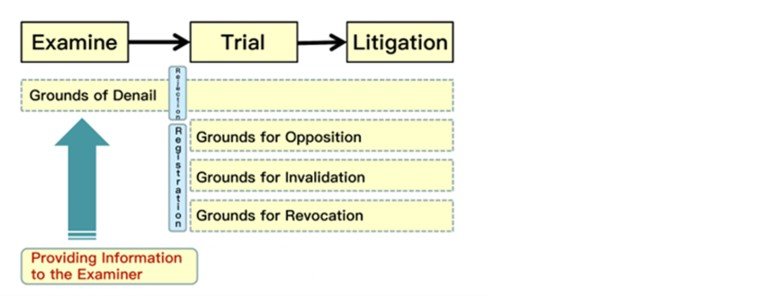
Requirements
Information provider: Anyone can provide information to the examiner.
Target: Pending applications at JPO
Materials:
1) Publications or copies thereof
2) Catalogs, pamphlets, etc., related to trademark use
3) Certification documents, such as copies of transaction documents
(Examination Manual for Trademark 89.01)
Approximately 600 to 1,000 applications receive provided information every year. Approximately 60% of applications for which information was provided eventually received a final rejection, according to the JPO.
(Source: JPO https://www.wipo.int/edocs/mdocs/mdocs/ja/wipo_webinar_wjo_2023_13/wipo_webinar_wjo_2023_13_1.pdf)
Opposition, invalidation, and revocation after registration
If the misappropriated trademark application has already been registered, the grounds discussed above can still be claimed through different procedures, as shown in the table below.
|
|
Opposition |
Invalidation |
Revocation |
|
Qualification to Request |
Anyone |
Interested party |
Foreign right holders |
|
Grounds |
Violating Public Order and Morality (Article 4(1)(vii)) Well Known Trademarks (Article 4(1)(x)) Trademarks Causing Confusion (Article 4(1)(xv)) Famous Trademarks (Article 4(1)(xix)) |
Same as left |
Article 53-2 (Local Agents’’ Applications) |
|
Time Limit |
2 months from publication |
5 years from registration (for 4(1)(x) and (xv)) |
5 years from registration |

